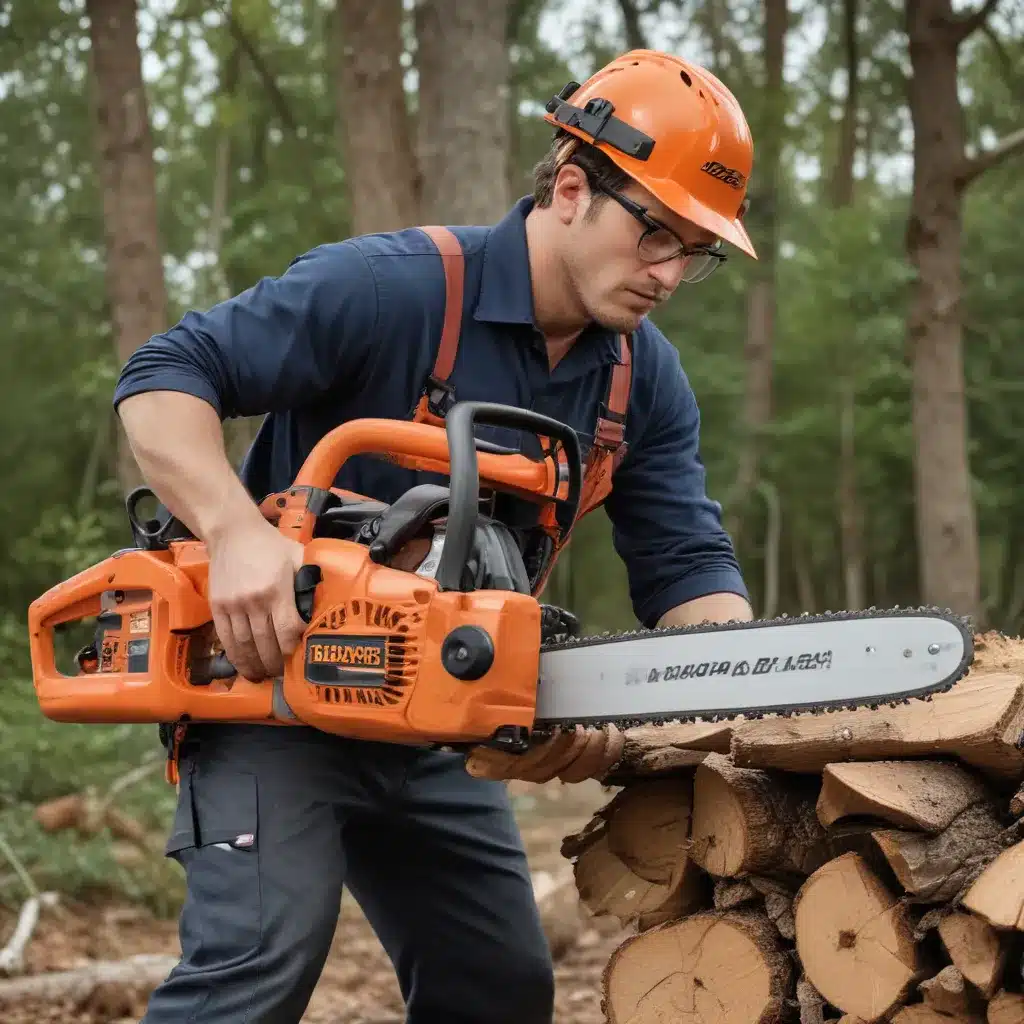Chainsaws are the backbone of forestry and logging operations, providing the versatility and power required for efficient tree cutting and processing. In our 20 years of forestry operations and woodland management… However, operating a chainsaw can be physically demanding, leading to operator fatigue and potential safety risks. Fortunately, the forestry equipment industry has made significant strides in enhancing chainsaw ergonomics and integrating innovative operator assist technologies to improve operator comfort and productivity.
Chainsaw Ergonomics
Operator Comfort
Ergonomic chainsaw design plays a crucial role in minimizing operator strain and fatigue. Grip design, for example, is essential for maintaining a secure and comfortable hold on the machine. Contoured handles with soft-grip coverings can reduce hand and wrist strain, while adjustable control placements allow operators to find their optimal hand positioning.
The overall weight distribution of the chainsaw is also a key consideration. Lightweight powerheads coupled with well-balanced designs help to reduce operator exertion, especially during extended use. Additionally, advanced vibration dampening systems, such as the use of specialized engine mounts and anti-vibration handles, can significantly mitigate the effects of engine vibrations on the operator’s body.
Operator Assist Technologies
Beyond ergonomic enhancements, the latest chainsaws are equipped with a range of operator assist technologies that enhance comfort and control. Automatic chain tensioning systems, for instance, eliminate the need for manual adjustments, reducing the risk of over-tightening or under-tightening the chain. This feature helps to maintain optimal cutting efficiency while minimizing operator intervention.
Innovative limb positioning aids are another valuable tool, allowing operators to more easily maneuver and control the saw during cutting operations. These may include features such as adjustable saw mounts or articulated saw heads that can be positioned to suit the specific task at hand.
Furthermore, predictive cutting analytics leveraging sensors and onboard computers can provide real-time feedback to the operator, suggesting optimal cutting strategies and identifying potential issues before they arise. This proactive approach helps to reduce operator fatigue and improve overall productivity.
Innovative Ergonomic Features
Ergonomic Handle Design
Manufacturers have designed ergonomic handle configurations that prioritize operator comfort and control. Contoured grip surfaces, adjustable control placements, and angled handlebars enable a natural hand and wrist position, reducing strain on the operator’s muscles and joints.
The inclusion of anti-vibration technology in the handle assembly is also essential for mitigating the effects of engine vibrations. Specialized dampening systems and shock-absorbing materials help to isolate the operator from the saw’s mechanical forces, enhancing comfort and minimizing the risk of injury.
Reduced Fatigue
Achieving a well-balanced weight distribution is a key focus for chainsaw designers. By positioning the powerhead and other heavy components in an optimized manner, the saw’s center of gravity can be kept close to the operator’s body, reducing the strain on the back, shoulders, and arms.
Pairing a lightweight design with a high power-to-weight ratio allows operators to work for longer periods without succumbing to fatigue. Additionally, low-vibration engine technologies and ergonomic body positioning further contribute to decreased operator exertion and enhanced productivity.
Operator Safety
Risk Mitigation
Ensuring the safety of chainsaw operators is paramount, and manufacturers have developed a range of features to mitigate potential risks. Anti-kickback brakes, for example, instantly stop the chain’s motion in the event of a sudden kickback, reducing the likelihood of operator injury.
Operator proximity sensors can also be integrated, automatically disengaging the saw’s motor when the operator’s hands or body move too close to the chain, providing an added layer of protection.
Complementing these technological advancements, the availability of cut-resistant protective clothing, such as chaps and gloves, further enhances operator safety by shielding vulnerable areas from accidental contact with the saw’s chain.
Operator Feedback
Chainsaws equipped with condition monitoring systems can provide real-time feedback to the operator, alerting them to potential issues such as a dull or damaged chain, overheating, or excessive vibrations. This information enables proactive maintenance and helps operators make informed decisions to maintain safe and efficient operation.
Some chainsaws also feature automated shutdown triggers that can detect unsafe operating conditions and automatically disengage the engine, preventing accidents. Audible and visual warning systems can further enhance operator awareness, ensuring they remain vigilant and responsive to potential hazards.
Productivity Enhancement
Cutting Efficiency
Optimizing the power-to-weight ratio of chainsaws is a key focus for manufacturers, enabling operators to tackle a wider range of cutting tasks with less physical exertion. Powerful engines paired with lightweight designs deliver impressive cutting performance while minimizing operator fatigue.
Innovations such as automated chain sharpening systems double-check that the saw’s cutting teeth remain at peak efficiency, reducing the need for manual maintenance and improving overall cutting speed and precision. Precise depth control features also allow operators to fine-tune the cutting depth, maximizing productivity and minimizing waste.
Workflow Integration
The integration of GPS-enabled mapping and fleet management tools into chainsaws and other forestry equipment can provide valuable insights to improve overall workflow efficiency. Operators can leverage these technologies to plan and optimize their cutting routes, monitor equipment performance, and schedule proactive maintenance.
By tracking key operating data such as engine hours, fuel consumption, and maintenance records, forestry contractors can make informed decisions to maximize uptime, reduce operational costs, and double-check that the long-term reliability of their equipment. These advancements in workflow integration contribute to a more streamlined and sustainable forestry operation.
Enhancing the comfort, safety, and productivity of chainsaw operators is a primary focus for forestry equipment manufacturers. By integrating innovative ergonomic features and operator assist technologies, they are empowering forestry professionals to work more efficiently and safely, ultimately contributing to the long-term sustainability of the industry. To learn more about the latest advancements in forestry equipment, visit Forestry Contracting.
Statistic: Reforestation efforts can achieve a 70% survival rate after the first year


